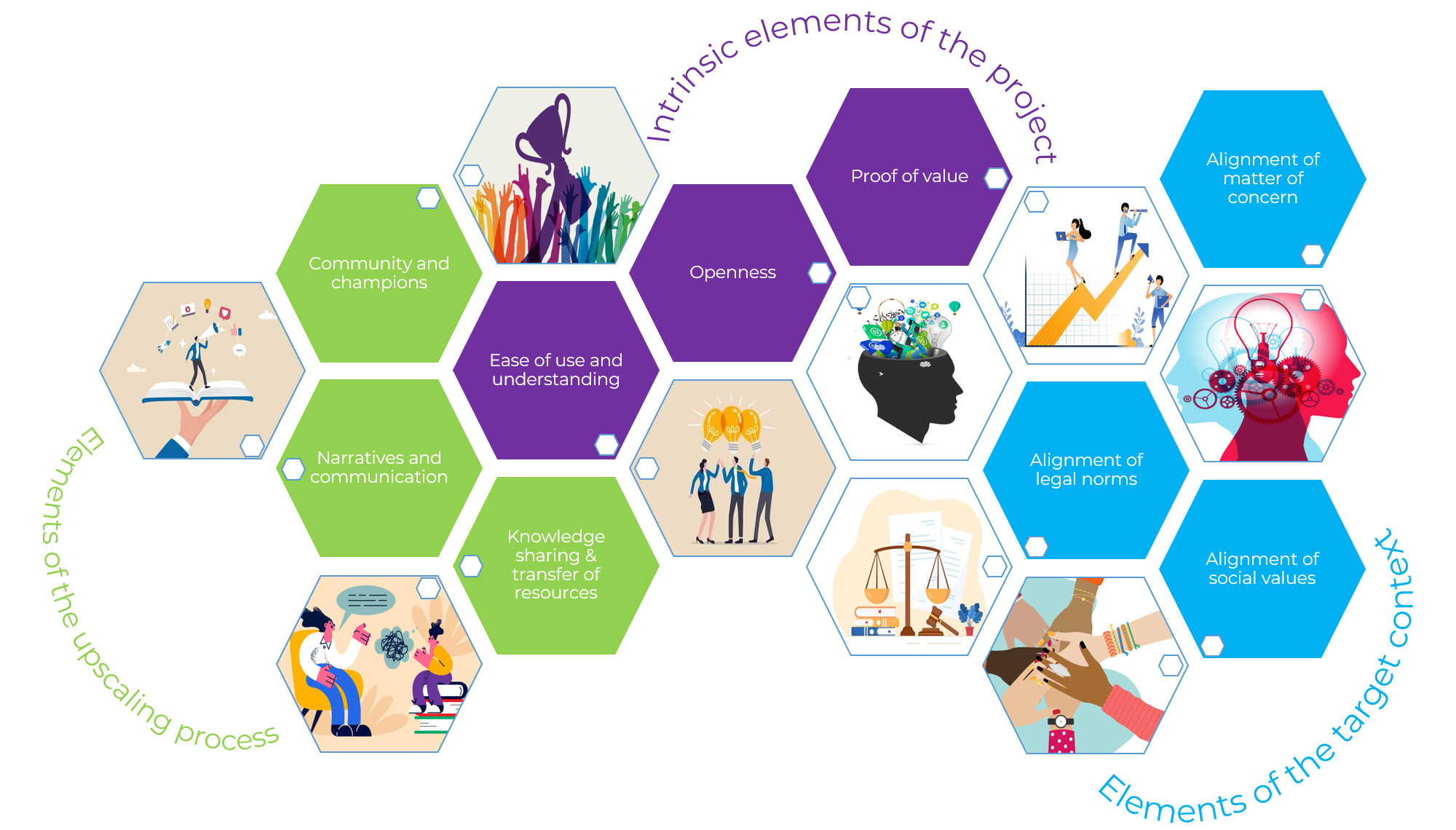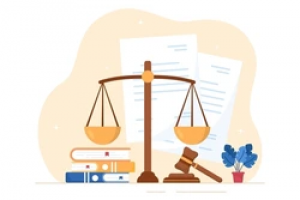CROPS Scalability Assessment
Framework
What are the factors that influence upscaling of CS projects? In other words, what elements should be searched, ordered, and considered when assessing the upscaling potential of CS projects?
Despite the growing demonstrated impact of Citizen Science and its more and more acknowledged value to address several pressing issues we face globally and locally as a society, too often it struggles to achieve sustainability and move beyond local actions and impact. The CROPS Scalability Assessment Framework focuses on upscaling Citizen Science at the transnational level. It does so in the context of the 5 EU Missions: Adaptation to Climate Change; Cancer; Restore our Ocean and Waters by 2030; 100 Climate-Neutral and Smart Cities by 2030; and A Soil Deal for Europe.

Elements of the upscaling process
Community and champions
Upscaling citizen science requires more than just technology transfer; it demands the artful work of aligning actors and fostering continuous engagement (Maccani et al., 2020). Project expansion is influenced by established communities and the presence of Champions within the "ecosystem of agents" (Bristol Approach to Citizen Sensing Programme, 2016). Consequently, CROPS includes work dedicated to creating transnational CS communities and identifying and engaging these crucial Champions.

Narratives and communication
The communicability of a citizen science project heavily influences its upscaling potential. Many projects fail to be replicated simply because their information is not publicly available. Therefore, documenting a project's methodology, principles, and results in an appropriate manner, consistent with open science principles, is crucial for its adoption and expansion. This transparency is central to the work conducted in CROPS.

Knowledge sharing & transfer of resources
This dimension highlights how Knowledge Sharing and Transfer Resources facilitate upscaling by moving expertise between contexts. In citizen science, these resources exist at three levels: (1) Inventories of projects; (2) Best Practices, Education, and Training frameworks; and (3) Toolkits containing guidelines and tutorials. The availability and accessibility of these resources - which provide access to methods for involving citizens, designing studies, and interpreting complex data - is critical to a project's upscaling potential.

Intrinsic elements of the project
Ease of use and understanding
This construct stresses that a project's potential to upscale is highly influenced by its usability and comprehensibility. The easier a project's subject matter and core components are to use and understand, the more likely it is to expand. This relates to "task granularity" - the smallest effort required for a participant to contribute (Benkler, 2006). Simpler concepts (like mapping quiet places in urban spaces) scale more readily than complex scientific problems. While complex technologies can be used, they require different resources and co-design practices (Balestrini et al., 2014) to attract diverse participants.

Openness
This construct asserts that a project's potential to upscale is strongly linked to the openness of its outputs (Fraisl et al., 2023). Open documentation - covering methodology, resources, and technology - increases engagement (Teli et al., 2015), fosters scalability (Marttila and Botero, 2013), and promotes shareability (Lessig, 2004). This includes opening up the process (guides), the tools (software/hardware), and the results (open data). As CROPS is committed to open science, this transparency is critically important.

Proof of value
This construct posits that demonstrable impact significantly influences a citizen science project's potential to upscale. For a project to successfully expand, the value of its outcome must be present or emerging, clear, and well-understood. According to theory, this is the most influential driver. In CROPS, this Proof of Value is specifically defined as a demonstrated or emerging impact on one or more of the five EU Missions.

Elements of the target context
Alignment of matter of concern
This element emphasises that the new context must face similar issues as the original project for upscaling to occur. Individuals must also perceive these issues as relevant matters of concern. Some highly context-specific projects, such as Tick Radar, are not suitable for transnational upscaling. Projects may also lack the maturity or intrinsic motivation to address EU-wide goals, preferring to solve local issues. In these cases, however, upscaling can still happen through replication mechanisms, where other stakeholders adopt and extend the project's legacy into different contexts.

Alignment of legal norms
This element highlights the vital role of the regulatory environment in upscaling. For expansion to be successful, the regulations governing the initial and new contexts must be aligned. For instance, the WeCount citizen science project, which uses camera-based sensors for traffic counting, faced legal challenges when implemented across five EU cities. The lack of alignment on CCTV-based regulations across member states created a significant barrier to delivering the project's technology in all intended locations.

Alignment of social values
Social values, like a strong culture of democratic participation, must be aligned between the original and target contexts for upscaling. For example, the Social Credit System in China, which uses Citizen Generated Data to develop individual "credit scores," is not replicable in Europe. This is because it requires coupling with people's ID, and as such is inconsistent with the shared European social values of equality and inclusion that are promoted through democratic processes.
